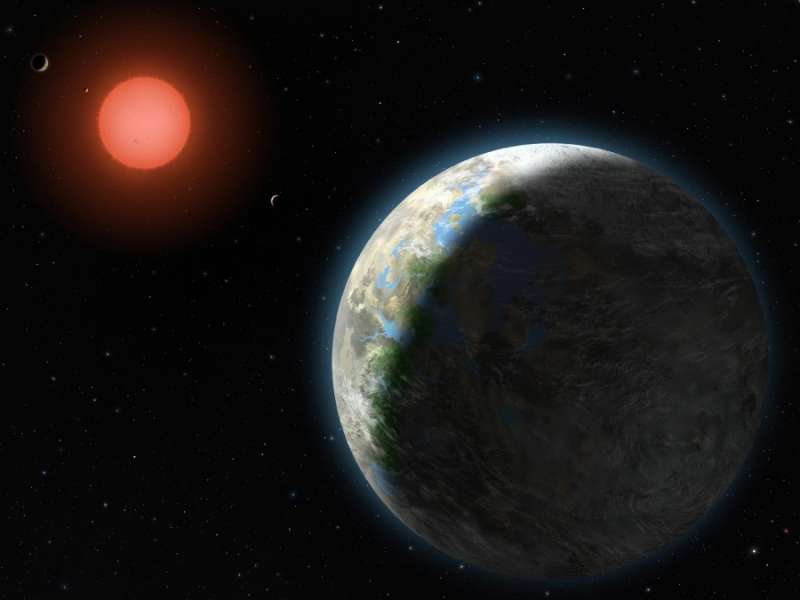
|
Credit & Copyright: Lynette Cook
Explanation:
A mere 20 light-years away in the constellation Libra,
red dwarf star Gliese 581
has received much scrutiny by astronomers in recent years.
Earthbound telescopes had detected the signatures of
multiple planets orbiting the cool sun, two at least close to the
system's habitable zone --
the region where an Earth-like
planet can have liquid water on its surface.
Now a team headed by
Steven Vogt (UCO Lick), and
Paul Butler (DTM Carnagie Inst.)
has announced the detection
of another planet,
this one squarely in the system's habitable zone.
Based on 11 years of data,
their work
offers a very compelling
case for the first
potentially habitable planet found
around a very nearby star.
Shown in this
artist's illustration of the inner part of the
exoplanetary system, the planet is designated Gliese 581g, but Vogt's
more personal name is Zarmina's world, after his wife.
The best fit to the data indicate the planet has a circular 37 day
orbit, an orbital radius of only 0.15
AU,
and a mass 3.1 times the Earth's.
Modeling includes estimates of a planet radius of 1.5,
and gravity at the planet's surface of 1.1 to 1.7 in
Earth units.
Finding
a habitable planet so close by suggests
there are
many others
in our Milky Way galaxy.
|
January February March April May June July August September October November December |
| ||||||||||||||||||||||||||||||||||||||||||||||||
NASA Web Site Statements, Warnings, and Disclaimers
NASA Official: Jay Norris. Specific rights apply.
A service of: LHEA at NASA / GSFC
& Michigan Tech. U.
Based on Astronomy Picture
Of the Day
Publications with keywords: extrasolar planet - red dwarf - life
Publications with words: extrasolar planet - red dwarf - life
See also:
- APOD: 2025 September 8 Á IRAS 04302: Butterfly Disk Planet Formation
- APOD: 2024 July 8 Á Exoplanet Zoo: Other Stars
- Temperatures on Exoplanet WASP 43b
- Epsilon Tauri: Star with Planet
- APOD: 2023 October 17 Á PDS 70: Disk, Planets, and Moons
- APOD: 2023 September 20 Á Methane Discovered on Distant Exoplanet
- APOD: 2023 June 6 Á Star Eats Planet
